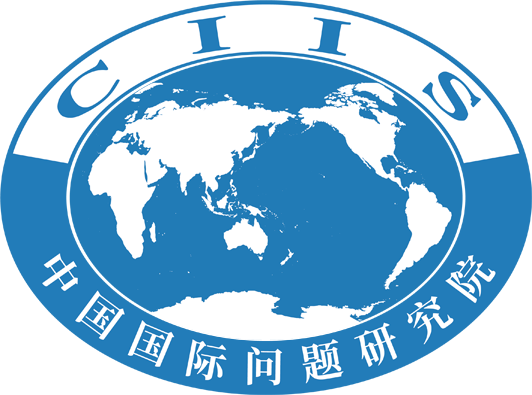The State Council Information Office of China released its Arctic white paperChina’s Arctic Policyon January 26th, 2018. It’s the first official document that China issued to clarify its basic positions, policy goals and major polices on Arctic affairs. While China’s Arctic activities have been for a long time, the development of its position towards the Arctic emerged from about only ten years ago.
1. A brief history of China’s Arctic activities
China’s Arctic activities started from 90 years ago. 1925 is the officially recognized starting point, when the then Chinese government signed theSpitsbergen Treatyor theSvalbard Treaty. According to this treaty, Chinese citizen and company have access to Svalbard and the right to undertake any kind of maritime, industrial, mining or trade activity.
Compared with other affairs, the Arctic is not important in China’s agenda for a rather long time. In fact, China didn’t undertake any significant activities in the Arctic for more than 60 years after 1925. However, as the reform and opening up policy proceeded in an all round way and the Arctic region’s desecuritization process unfolded after the Cold War, China renewed its focus on the Arctic. In 1995, a group of Chinese scientists and journalists travelled to the North Pole and conducted research. It’s the first North Pole expedition that China organized. In 1996, China became a member of the International Arctic Science Committee. In 2004, China built the Arctic Yellow River Station—its only Arctic station —in Svalbard’s Ny-Ålesund.
China’s Arctic activities intensified and expanded into diverse areas such as Arctic global governance and economic development in the 21stcentury. According toChina’s Arctic Policy, China has carried out 8 scientific expeditions in the Arctic Ocean with its research vesselXue Long(Snow Dragon), and conducted research for 14 years with the Yellow River Station as the base by the end of 2017. In 2013, China was granted permanent observer status by the Arctic Council. In recent years, Chinese enterprises conducted several commercial trial voyages in Arctic shipping routes. For example, the freighterYong Sheng(Eternal Prosperous), which belongs to China’s largest shipping enterprise COSCO (China Ocean Shipping Company), passed the Northeast Passage in 2013, became the first Chinese merchantman to do that. China also begins to participate in Arctic energy exploitation and infrastructure construction. The Sino-Russian Yamal LNG project, which went into production in December 2017, has attracted great attention.
2. The development of China’s position before the white paper
It’s not problematic that China didn’t think it’s necessary to clarify its Arctic policies and position when its Arctic activities are sporadically conducted and scientific research is the major, or even the only activity. As China’s economic power increased sharply and its Arctic activities intensified in recent years, however, the international society, especially the Arctic states, is deeply concerned that how will China employ its powerful scientific and economic strength, what’s its aim in the Arctic, and whether China will respect Arctic states’ rights. After the other major “Non-Arctic states” such as South Korea, Japan, Germany and UK issued their Arctic strategies, China’s Arctic policy and position paper is constantly called for.
In fact, China did try to clarify its Arctic position several times before the release of the white paper. This can be traced back to the speech made by Hu Zhengyue, the then assistant minister of foreign affairs, in 2009 at the High North Study Tour, which was organized by Norwegian government. [2]In his speech, Hu underscored China’s support for the Arctic Council, theSvalbard Treatyand the Arctic related content of theUnited Nations Convention on the Law of the Sea(UNCLOS). China’s respect for the sovereignty and jurisdiction enjoyed by the Arctic states was emphasized as well. He also pointed out that the existing Arctic legal order needs to be gradually updated according to the changes of the situation; the Arctic coastal states should balance their interests with international community’s common interests when defining the limits of the outer continental shelves.
China became the permanent observer of Arctic Council in 2013, which means by accepting the Council’s revised criteria for admitting observers, the most sensitive of which is “Recognize Arctic States’ sovereignty, sovereign rights and jurisdiction in the Arctic”, [3]China formally made its position on the question which is most concerned by the Arctic states known.
Two years later, the Chinese government introduced its Arctic activities and polices comprehensively for the first time at the third Arctic Circle Assembly. In his video message, the foreign minister Wang Yi formally put forward the concept that China is a major stakeholder in Arctic affairs. He claimed that China’s principles on the Arctic are “respect, cooperation and win-win”, China will respect the Arctic States’ sovereignty, sovereign rights and jurisdiction in the Arctic, and the legitimate concerns and rights that China enjoyed under international law in the Arctic should be respected too. [4]In his keynote speech at the assembly, the then vice foreign minister Zhang Ming clarified the “stakeholder” concept by pointing out China’s geographical position as a “near-Arctic state”, which means “the changing natural environment and resources exploration of the Arctic have direct impact on China’s climate, environment, agriculture, shipping, trade as well as social and economic development”. Furthermore, 6 specific policies regarding Arctic affairs were put forward, in which China’s respect and support of the existing Arctic legal order and governance mechanism were emphasized. [5]
3. China’s Arctic Policy
China’s Arctic Policy , as long as about 9000 words, consists of three parts: Foreword, main body and Conclusion. The main body is further divided into 4 parts, including “The Arctic Situation and Recent Changes”, “China and the Arctic”, “China’s Policy Goals and Basic Principles on the Arctic” and “China’s Policies and Positions on Participating in the Arctic Affairs”. It will be published in 8 languages including Chinese, English, French, German, Russian, Spanish, Arabic and Japanese. [6]According to Kong Xuanyou, the vice foreign minister who briefed the press, the white paper will be updated in the future according to the changes of the situations.
It’s clearly announced in the white paper that China is an important stakeholder, and it determines to participate in Arctic affairs actively or in the words of Kong, China will not “absent itself from the Arctic affairs”. First, as mentioned above, China treats itself as geographically a “Near-Arctic State”, which means “the natural conditions of the Arctic and their changes have a direct impact on China”. Second, as signatory to Arctic related international treaties such as the UNCLOS and theSpitsbergen Treaty, and the permanent member of the UN Security Council, China enjoys certain rights such as “the freedom of scientific research, navigation, overflight, fishing, laying of submarine cables and pipelines, and resource exploration and exploitation in the high seas” and other relevant areas in the Arctic, and shoulders important responsibilities of “jointly promoting peace and security in the Arctic”. Third, as a major trading nation and energy consumer in the world, China may be hugely impacted by the exploration and development of the resources and the utilization of sea routes in the Arctic. Fourth, China can be expected to contribute to the development of the Arctic region. In short, China regards itself as “an active participant, builder, and contributor in Arctic affairs”.
Accordingly, the white paper sets China’s policy goals on the Arctic as “to understand, protect, develop and participate in the governance of the Arctic”, and China’s basic principles as “respect, cooperation, win-win result and sustainability”. 5 specific policies and positions are put forward:
1. Deepening the exploration and understanding of the Arctic;
2. Protecting the eco-environment of the Arctic and addressing climate change;
3. Utilizing Arctic resources in a lawful and rational manner;
4. Participating actively in Arctic governance and international cooperation;
5. Promoting peace and stability in the Arctic.
In the white paper’s detailed elaboration of these goals, principles, polices and positions, four aspects are most noteworthy. First, China’s respect for the rights and laws of the Arctic states, the tradition and culture of the indigenous peoples are repeatedly emphasized, China’s exploration and utilization of the Arctic will abide by related treaties and general international law. Apparently, China wants to reassure the Arctic states about its activities in the Arctic.
Second, the existing Arctic legal system and governance mechanism are highly valued. It is the treaties and international laws mentioned above that give China the rights to participate in Arctic affairs. Besides, China will seek international cooperation when engage with the Arctic, without which its activities, especially the exploitation and utilization of Arctic resources will become very difficult, even unimaginable.
Third, Arctic scientific research and environment protection are placed in an important position. “To explore and understand the Arctic serves as the priority and focus for China in its Arctic activities”, the white paper reads. Fragility of the ecosystem of the Arctic is fully realized, and China’s will to protect the environment in its Arctic activities is repeatedly emphasized.
Fourth, the concept of “Polar Silk Road” is put forward and incorporated into China’s Belt and Road Initiative. The Yamal LNG project, of which the Silk Road Fund holds 9.9% shares, is one of the specific activities. While Russia is the major partner of China in building this “Polar Silk Road” along the Northeast Passage at present, the white paper makes it clear that the Northwest Passage and the Central Passage are not excluded and “China hopes to work with all parties”. Infrastructure construction and commercial and regularized operation of the Arctic routes are highlighted.
By releasing the Arctic white paper, the development of China’s position towards the Arctic proceeded into a new stage. From now on, China has authoritative guidelines to guide its Arctic activities andChina’s Arctic Policyprovides a reasonable basis for the international society to judge the trends of China’s Arctic activities in the future.
Dr. Liu Jin is Assistant Research Fellow of the Department for European Studies in CIIS.
Source: Originally published in German as "China als Baumeister in der Arktis: Zum Weißbuch der chinesischen Arktispolitik",WeltTrends: Das außenpolitische Journal,Nr. 140, Juni 2018.
According to the information published by Chinese Arctic and Antarctic Administration, China’s second icebreakerXue Long 2, a product of China’s cooperation with Finland, will enter into service in 2019.
[2] “中国对北极事务的看法——外交部胡正跃部长助理在‘北极研究之旅’上的报告” [China’s Views on Arctic Affairs---Assistant Minister of Foreign Affairs Hu Zhengyue’s Report at the ‘High North Study Tour’],Shijie Zhishi, No. 15, 2009, pp. 54-55.
[3] http://arctic-council.org/index.php/en/about-us/arctic-council/observers.
[4] “王毅部长在第三届北极圈论坛大会开幕式上的视频致辞” [Video Message by Foreign Minister Wang Yi At the Opening Ceremony of the Third Arctic Circle Assembly], October 17th, 2015, http://www.fmprc.gov.cn/mfa_eng/wjb_663304/wjbz_663308/2461_663310/t1306857.shtml .
[5] “外交部副部长张明在‘第三届北极圈论坛大会’中国国别专题会议上的主旨发言” [Keynote Speech by Vice Foreign Minister Zhang Ming at the China Country Session of the Third Arctic Circle Assembly ] , October 17th, 2015, http://www.fmprc.gov.cn/mfa_eng/wjdt_665385/zyjh_665391/t1306858.shtml.
[6] For the English edition, see http://www.scio.gov.cn/zfbps/32832/Document/1618243/1618243.htm.



